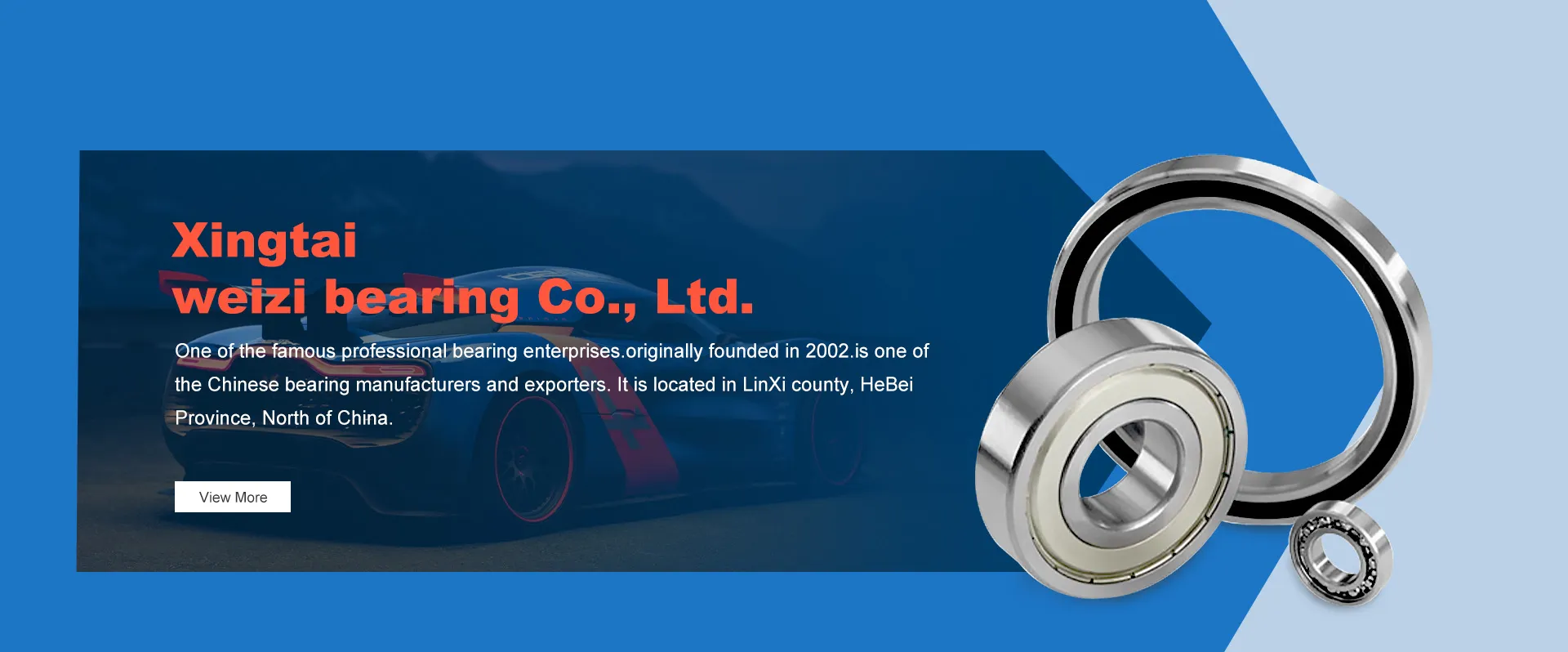
10 月 . 13, 2024 05:44 Back to list
spherical roller bearing failure analysis
Spherical Roller Bearing Failure Analysis
Spherical roller bearings are crucial components in a vast range of machinery, providing high radial load capacity and accommodating misalignment. However, like all mechanical components, they can fail under certain conditions. Understanding the modes of failure in spherical roller bearings is essential for maintenance and to ensure the reliability of the systems in which they operate.
Common Failure Modes
1. Fatigue Failure This is one of the most prevalent modes of bearing failure. It occurs due to the repeated stress cycles on the bearing material, which leads to the formation of micro-cracks that can grow and eventually cause spalling or material flaking. Factors influencing fatigue failure include poor lubrication, high operating temperatures, and excessive loads.
2. Wear Over time, the surfaces of the rolling elements and raceways can wear down due to continuous contact and friction. This wear can be accelerated by inadequate lubrication or contamination. As wear progresses, it can lead to increased clearance, reduced load-carrying capacity, and eventual bearing failure.
3. Corrosion When bearings are exposed to moisture or harsh chemicals, it can lead to corrosion of the rolling elements or raceways. This type of failure can be particularly detrimental since it weakens the structural integrity of the bearing, leading to premature failure.
4. Misalignment Spherical roller bearings are designed to accommodate some misalignment, but excessive misalignment can result in uneven load distribution, overheating, and ultimately premature bearing failure. It is essential to ensure proper installation and alignment during the assembly of machinery.
5. Contamination The presence of dirt, dust, or other particulates can lead to abrasive wear and reduced bearing performance. Contaminants can infiltrate the bearing through seals or openings and disrupt the lubrication film, leading to increased friction and potential overheating.
spherical roller bearing failure analysis

Preventative Measures
To mitigate the risks associated with spherical roller bearing failures, several preventative measures can be implemented
- Regular Maintenance Implementing a scheduled maintenance program that includes inspection and lubrication can help detect issues before they lead to failure. Maintenance should also focus on ensuring seals are intact to prevent contamination.
- Proper Lubrication Choosing the correct type and amount of lubricant is crucial for maintaining optimal operating conditions. The lubricant should reduce friction, dissipate heat, and protect against wear and corrosion.
- Monitoring Conditions Using vibration analysis, temperature monitoring, and other condition-monitoring techniques can help in identifying early signs of bearing failure. These tools allow for timely interventions before catastrophic failure occurs.
- Good Design Practices When selecting spherical roller bearings for a particular application, consider factors such as load requirements, operating speeds, and environmental conditions. Over-sizing or under-sizing a bearing can result in increased failure rates.
Conclusion
The failure of spherical roller bearings can have significant implications for machine performance and reliability. By understanding the common failure modes and implementing robust preventative measures, engineers and maintenance personnel can enhance the longevity of these crucial components. Investing in proper maintenance, effective lubrication, and condition monitoring not only minimizes the risk of failure but also contributes to the overall efficiency and productivity of machinery.
Latest news
-
Unlocking Efficiency with Spherical Roller Bearings
NewsOct.29,2024
-
The Ultimate Guide to Thrust Ball Bearings
NewsOct.29,2024
-
The Power of Thrust Roller Bearings: Engineered for Excellence
NewsOct.29,2024
-
The Power of Deep Groove Ball Bearings for Your Application Needs!
NewsOct.29,2024
-
The Power and Performance of Cylindrical Roller Bearings
NewsOct.29,2024
-
High-Quality Ball Bearing Manufacturing Machines
NewsOct.29,2024
